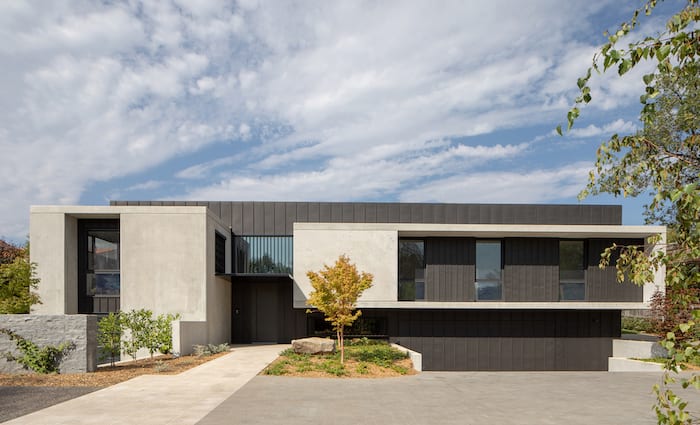Canberra's Concrete House constructed with sustainable principles
The sustainability of our residences is an important part of daily life.
The Concrete House in Canberra's Deakin was constructed with a sustainable approach from the outset.
The project's architect Rob Henry of Rob Henry Architects says the planning started with overlays of sustainable principles and aesthetics.
Henry's brief was to create a contemporary family home that could withstand the pressures of climate change, whilst also ensuring the aesthetic was not compromised by the implementation of thermal performance systems.
Two years in construction, The Concrete House was completed.
Winner of the Malcolm Moir and Heather Sutherland Award for residential architect for new houses at the Australia Institute of Architects ACT Chapter 2019, The Concrete House has an 8.5 energy rating and doesn't rely fully on mains service for water and electricity. It is completely disconnected from mains gas.
"Each space needed to optimise solar orientation, and thus the U-shaped planning with central courtyard was developed," Henry said.
The U-shape courtyard maximises solar orientation and cross ventilation and is viewed from each of the residences three wings, with maximum light achieved in as many rooms as possible.
The three wings comprise a north-easterly bedroom wing, a south-westerly circulation spine/services wing and a northerly living and study wing.
They open to the courtyard which anchors the home, with its solar heated swimming pool.
The Concrete House is to be showcased at DESIGN Canberra 2019, an annual festival held every November that celebrates local architecture.
Henry suggests that much like the rest of Australia, Canberra's adoption of innovative solutions for building sustainability has been relatively slow, which in part, he puts down to the lack of architect-involvement on new builds.
"The residential new build market has been busy of recent years, but only a small percentage (only five per cent) of projects are being designed by architects," Henry said.
"There has been a trend to value quantity over quality, with the size of dwelling continuing to rise and the designs lacking consideration for sustainability and longevity.
"Too many homes are not being designed for their site and for local climate conditions."
Henry says the lifespan of concrete is double or triple other common building projects.
"Concrete is very durable and withstands all weather conditions as it does not rust, rot or burn," Henry said.
The project took longer than standard in part due to the use of concrete, but also due to the high level of detailing and the implementation of thermal performance systems.
Sinking in to the sloping site, from street level The Concrete House has a one and a half storey front facade with a semi inset basement parking and guest wing below.
The entrance is at mid-level and the main house above.
Charcoal zinc cladding wraps the main structure to induce a recessive quality.
The interior reflects the exterior with concrete flooring, stairs and blade walls that extend through the circulation spine. The windows are charcoal framed and the door hardware and joinery details are inset in to crisp white surfaces.
Henry says the build form of the Concrete House takes cues from its surrounding context.
"Situated close to the National Capital’s Parliamentary Triangle, where there is a prominence of concrete cubic forms, the house distils this language into a residential scale," Henry said.
"The materiality speaks to a desire for a building of endurance," Henry added.
Henry says he hopes The Concrete House will share a level of endurance that the Benjamin House, also in Deakin, has afforded.
The Benjamin House was designed by Alex Jelinek for Professor Bruce Benjamin and his wife in the mid 1950s.
The Czechoslovakian educated architect, who migrated to Australia in 1950 to work on the Snowy Mountains Hydro Electricity scheme, built the home with concrete blockwork, reinforced concrete walls and suspended slabs, timber framed floors and steel and timber roof framing with a membrane roof.
"Benjamin House is architecturally striking yet understated in its landscape context, which is something we worked on for the Concrete House," Henry added.
This article was first published in the Weekend Australian.
